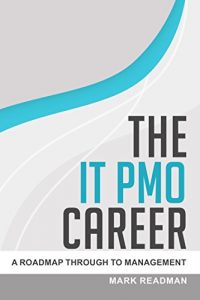“I wanted to write a book that helps the PMO professional understand where their knowledge levels are, how to become the best they can be in their current role and also demonstrate what is required to reach the next stage of the PMO career path.” - Mark Readman
Throughout my IT career I have been a consultant, so there is always an expectation when taking up a new assignment that I should be fully trained and hit the ground running. I believe that consultants should be the best in their field; they should be brought in by a company to make a real difference and lead the way on how that particular role should be fulfilled. This involves a lot of thought, research and training into each of my future roles to ensure their remits are fully understood and I can implement best practice at all levels. Now, with the benefit of experience, this is easier to do; as an analyst or even a PMO manager, this was more difficult. I had gained some experience from previous clients, but how did I know if that was best practice? How did my abilities compare to other analysts or managers in the market?
By writing this book, I wanted to give you my take on the world of the PMO. PMO functions and their objectives differ vastly from organisation to organisation; however, the basic controls and how these are executed should be very similar and share the same best practices.
The majority of textbooks focus on how to establish a PMO, understanding the stakeholders’ requirements and how to ensure the PMO aligns strategically with the organisation. The aim for me was to start from the bottom up. What does best practice look like across the PMO controls, and what contributions should the PMO analysts and managers be making in order to demonstrate a best-in-class PMO. If you are considering a move to the world of PMO or you are an already established PMO professional, you can understand where your knowledge levels are, how to become the best you can be in your current role and also demonstrate what is required to reach the next level on the PMO career path.
Throughout my IT career I have been a consultant, so there is always an expectation when taking up a new assignment that I should be fully trained and hit the ground running. I believe that consultants should be the best in their field; they should be brought in by a company to make a real difference and lead the way on how that particular role should be fulfilled. This involves a lot of thought, research and training into each of my future roles to ensure their remits are fully understood and I can implement best practice at all levels. Now, with the benefit of experience, this is easier to do; as an analyst or even a PMO manager, this was more difficult. I had gained some experience from previous clients, but how did I know if that was best practice? How did my abilities compare to other analysts or managers in the market?
By writing this book, I wanted to give you my take on the world of the PMO. PMO functions and their objectives differ vastly from organisation to organisation; however, the basic controls and how these are executed should be very similar and share the same best practices.
The majority of textbooks focus on how to establish a PMO, understanding the stakeholders’ requirements and how to ensure the PMO aligns strategically with the organisation. The aim for me was to start from the bottom up. What does best practice look like across the PMO controls, and what contributions should the PMO analysts and managers be making in order to demonstrate a best-in-class PMO. If you are considering a move to the world of PMO or you are an already established PMO professional, you can understand where your knowledge levels are, how to become the best you can be in your current role and also demonstrate what is required to reach the next level on the PMO career path.






